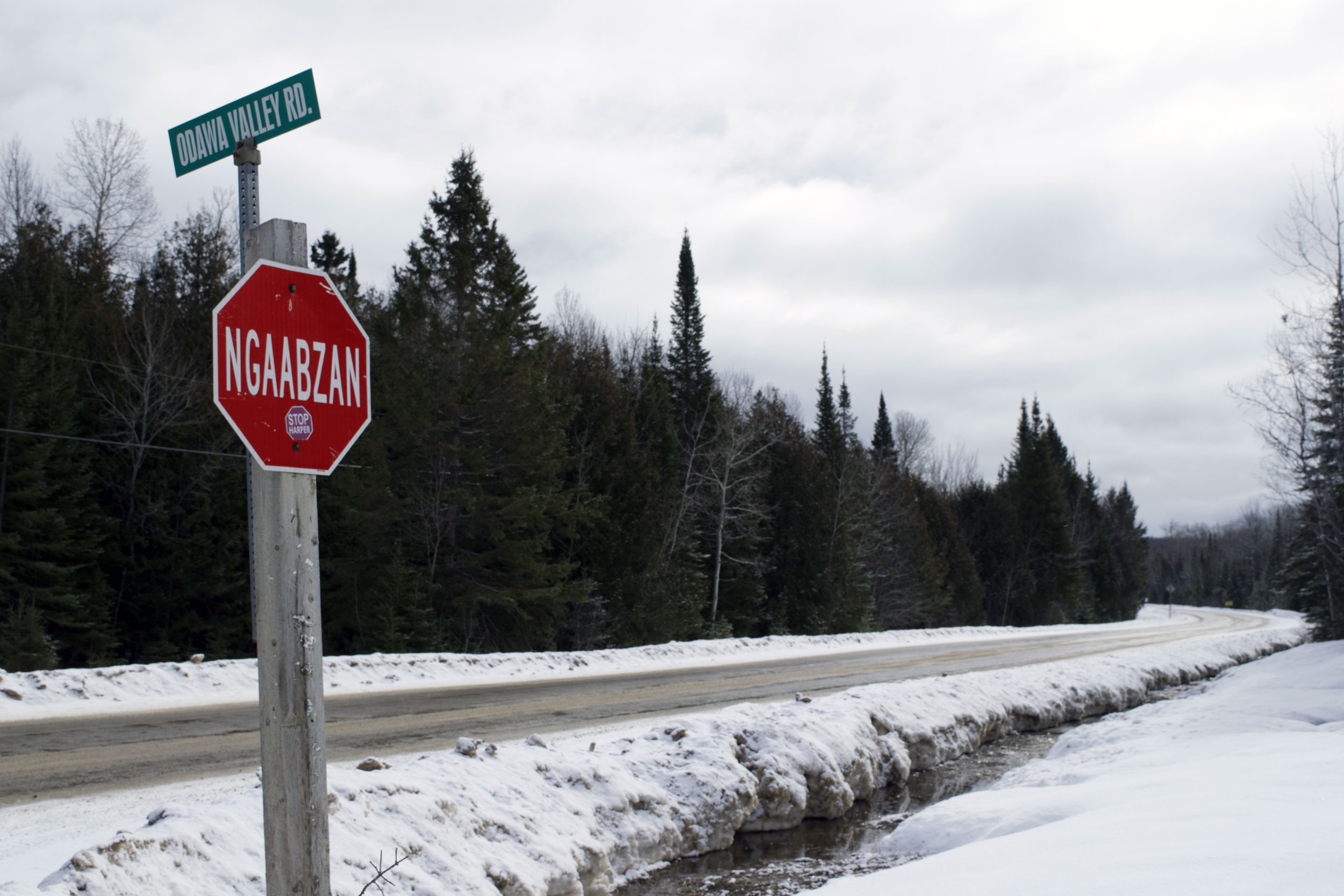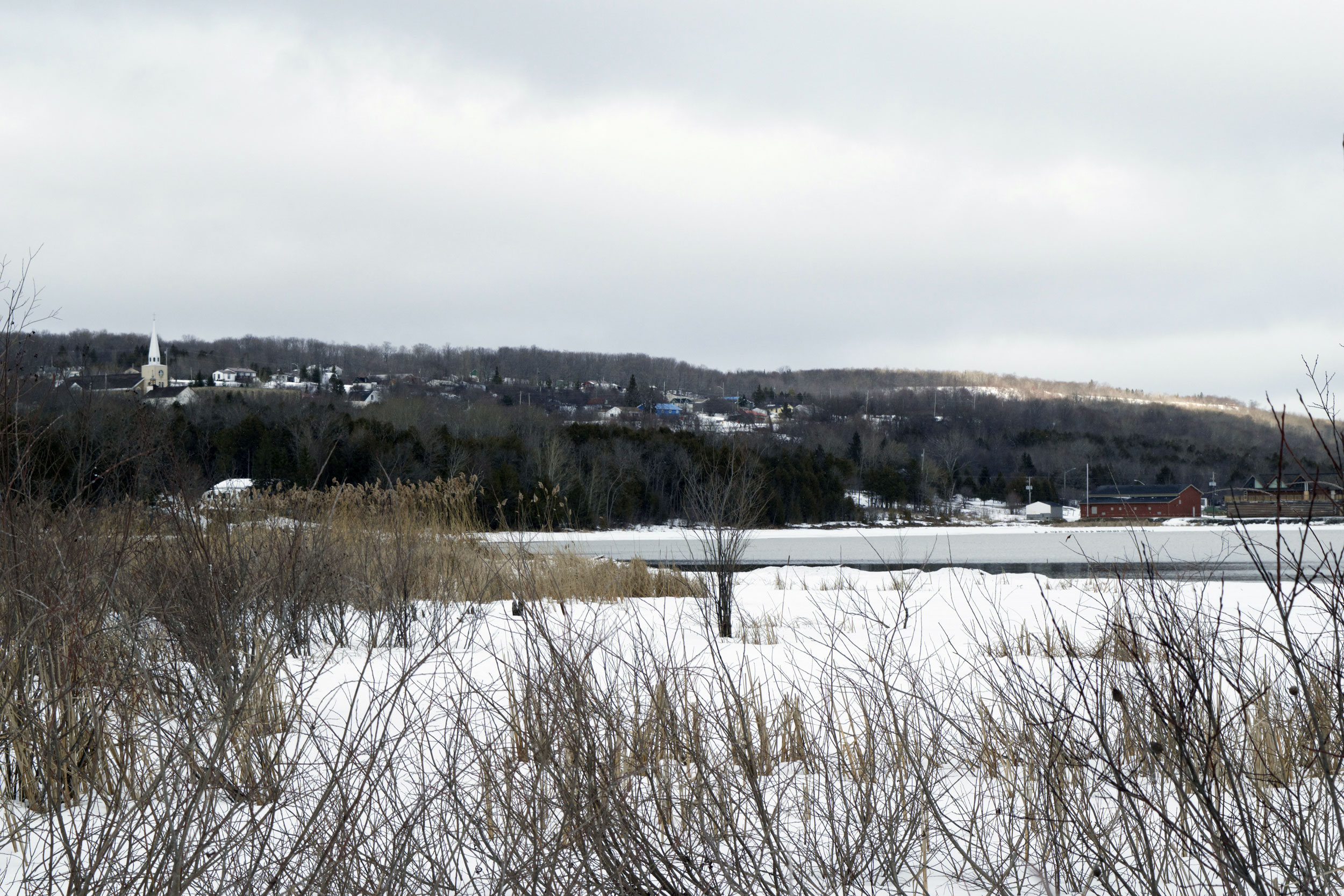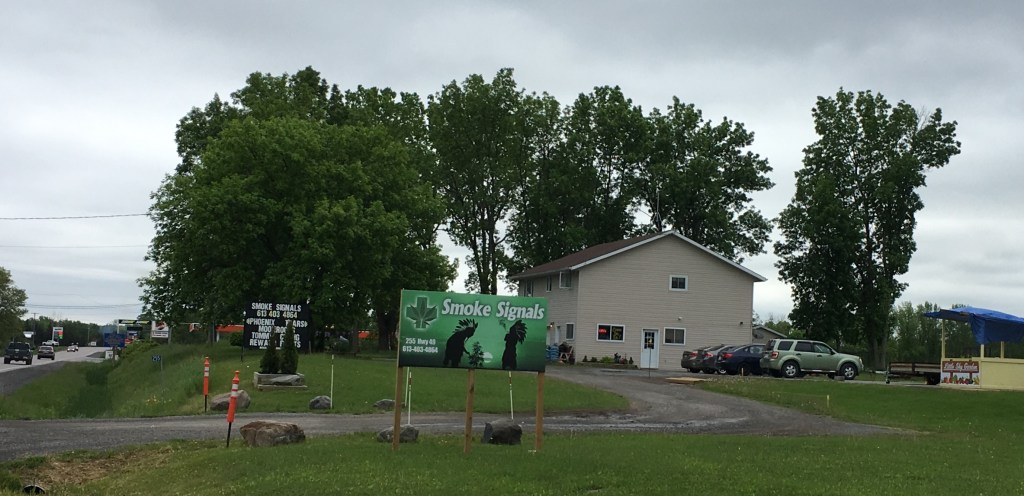Duke Peltier, Ogimaa (chief) of Wiikwemkoong Unceded Territory, says his community is one of the last unceded territories in Ontario. He is one in a long line of ogimaas who have kept it that way.
In 1836, a landmass the size of Prince Edward Island was promised to them. In 1862, that land was taken away by a treaty they never signed. Then, in the 1990s they were forced to go to court to defend their land rights and the fight continues to the present day.
Videos by VICE
Wiikwemkoong is situated on the eastern peninsula of Manitoulin Island, known as Odawa Mniss to the Anishinaabeg who have lived there since time immemorial. It holds special status as the only Indigenous community in Ontario that has repeatedly refused to sign a treaty. Despite this, it claims much of its territory has been expropriated by the Crown.
Now the community is on the brink of finalizing an agreement with Canada and Ontario that will see a portion of that land returned to them.

At 10,500 hectares—roughly the size of the city of Vancouver—the negotiated area encompasses sections of mainland and an archipelago of 25,000 islands that are embedded like shrapnel along the north shore of Georgian Bay. If the agreement is settled, Wiikwemkoong will become the third largest reserve in Canada, surpassed in land area only by the Blood 148 and Siksika 146 reserves in Alberta. Financial compensation for loss of land use is also expected in the tens of millions.
“The government cannot hold up a treaty and say ‘well no, you actually gave up your interests in these lands when you signed this treaty’,” Martin Bayer, a lawyer representing Wiikwemkoong in the current negotiations, told VICE. “The government cannot produce such a document because one does not exist.”
In 1836, the Anishinaabeg communities residing on Odawa Mniss signed an agreement with the Crown that enshrined their title rights over and interest in Manitoulin Island. Unlike most Ontario treaties, it does not contain a surrender clause: the community never agreed to give their land to the government. Instead, the 1836 agreement amounts to a promise to protect the island, to keep it free of settlers—and an acknowledgement that it belongs to the Anishinaabeg who live there.
The agreement did not last long. In 1862 First Nations residing on Manitoulin Island signed another far more controversial treaty, this time containing a surrender clause. Despite intense pressure, Wiikwemkoong was the only community that refused to participate. The treaty was economically devastating to the Indigenous communities on the island, it gutted their fishing and timber industries and made it virtually impossible to compete with settlers.
The people of Wiikwemkoong were equally affected, since they lost access to much of their territory. But there is an upside. Peltier says that refusing to sign the 1862 treaty has given Wiikwemkoong, which has an on-reserve population of 3,000, cultural independence and a relatively large amount of land. “Look at a map, a lot of First Nations across the country are on these very small parcels of land,” he says.

The community has been fighting for recognition that their land is unceded since 1862, but the modern incarnation of their fight began in 1975, when they signed a declaration asserting their rights to islands off their coast that had been promised to them in the 1836 agreement. Jean Chretien, Minister of Indian Affairs at the time, rejected it, and when they appealed, he outright ignored them.
In 1984, the community filed a claim to those islands, but after repeated rejections by the Crown, the community launched a lawsuit in 1997, which led to an interim ruling that defines Wiikwemkoong’s interests in the islands of northeastern Georgian Bay, stretching from Sault Ste. Marie to Penetanguishene. In 2008, the governments of Ontario and Canada agreed to negotiate a settlement for the central portion of the lands included in the 1997 litigation. It is this central portion, known as the Wiikwemkoong Islands Boundary Claim, that is on the verge of being settled.
“What this agreement seeks to do is to, in the spirit of reconciliation…(is) try to resolve that long outstanding claim to these islands. That’s really what it’s about,” says Bayer.
While the goal from all sides is reconciliation, controversy looms. Over the past century, islands that Wiikwemkoong claim as their own were sold. The Crown cannot expropriate privately-owned land to settle a land claim. This has led the province, together with Wiikwemkoong, to identify alternative areas, notably Philip Edward Island, a cherished destination for paddlers and outdoor recreationalists, which remains Crown land.
“You talk to campers and kayakers who kayak all over the world and they say this is one of the most beautiful and pristine archipelagos in the world,” Robert Nairn, president of the Northern Georgian Bay Association (NGBA), which represents the interests of cottagers in the affected area, told VICE.
Nairn says the province should have done more to advise the public of the impending land transfer. “We really think the province has mishandled the process to the detriment of all parties concerned,” he says. He is primarily concerned that cottagers and outdoor recreationalists will lose access to Philip Edward Island and surrounding lands before they even know it is being transferred. “We handed out over 400 flyers to campers because the province wasn’t reaching out to them to inform them of what was happening.”

He also fears a final agreement will be a missed opportunity to protect Philip Edward Island as a provincial park, something the province of Ontario had been considering prior to the negotiation. To resolve these issues, the NGBA and the Georgian Bay Association (GBA) have been working with Wiikwemkoong to create a long-lasting agreement, separate from provincial and federal negotiations, that will help shape how the land will be used, and who will access it. “We’re trying to create a long-lasting relationship with them that’s going to survive for generations,” says Ogimaa Peltier.
Ultimately for Peltier, the deal is about giving his community an opportunity to thrive. “One of those assurances in the 1836 agreement was the land would be forever available to our children and grandchildren, and their grandchildren. And that’s the viewpoint of our community,” says Peltier. “We want to restore the land back to what it was. Back into the state that it was, so that our people could be not only self-sustaining but self-governing and participate in the economy of Northeastern Ontario, much like we were prior to the so-called treaty making exercise in 1862.”
For people like Norman Assiniwe, who have grown up in Wiikwemkoong, the protracted land battle is part of the community’s collective memory. Every few days he walks his trap line on land that lies in the affected area. “I never knew when I was a kid it wasn’t ours,” he says, referring to the fact that both the province and Canada have yet to acknowledge the land under claim belongs to the people of Wiikwemkoong.
These days he brings along his six-year-old daughter, Annika, when he can. He is hopeful she won’t need to learn the same lesson he did as a child, “I think by then it’s going to be our land already,” says Assiniwe. “She knows all this area, she knows where camps are, she knows where good hunting area is, fishing area is, where wild rice grows, where the turtles are nesting.
“I just hope we get all our land back. It’s gonna happen, it’s just a matter of when.”
Follow Sophie on Twitter.




